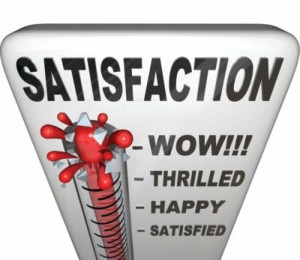But when the customer’s experience is inconsistent — exceptional one visit and so-so or poor the next — the customer’s confidence is compromised and, influenced by the perceived risk, they are more likely to consider competing alternatives.
Simply put, if the customer doesn’t trust that your business will consistently meet or exceed their expectations to deliver great results, they will not consistently return or become loyal customers.
Lessons: Outback Steakhouse
Outback Steakhouse is a great example of a company that uses consistency as a business advantage. No matter which Outback location you visit, domestic or abroad, the customer experience is generally the same.
Like most major chain restaurants, the tangibles of the facility – layout, design and décor – are virtually identical. Additionally, what the customer experiences when interacting with employees is consistent. From the door greeters to the friendly wait-staff that looks customers in the eye to the manager’s involvement when there is an unhappy customer, everything tends to be choreographed with precision.
Done this way, customers become familiar with the business. Familiarity makes customers comfortable and confident that wherever and whenever they visit Outback’s chain of restaurants, there will be no surprises.
Consistent Relationships
Success in any business comes primarily from building and maintaining relationships with customers. Once those relationships are built, customers expect that relationship will exist and be consistent when they return for future vehicle service needs.
One of the things that can quickly damage customer confidence and perceptions of consistency is when a shop manager or other personnel that customers have built a relationship with over previous visits is relocated to work at another location.
This situation often leaves customers feeling abandoned and frustrated that they need to start over again with someone new. Of course, the relocation of personnel is sometimes necessary to replace someone who left the company, to staff new locations or to fill other requirements. However, unless it’s absolutely necessary, these types of personnel transfers should be avoided to maintain and build consistency with customers.
Institutionalizing ‘Wins’
Recognize that delivering consistency means doing the right thing regularly. It’s easy to fall into the trap of a routine where you’re doing the same things over and over, regardless of whether these are the best things to do for the customer.
To achieve world-class customer service, you must be consistent with the positive aspects of your customer interactions and minimize (or eliminate) the negative aspects. Shop managers and employees regularly do wonderful things to improve the customer experience, earn customers’ business and maintain their loyalty. But, often those feats of greatness are confined to an individual shop and not spread to a second or third location.
As an example, one shop manager may be effectively managing his or her team members to clean customers’ wheels and apply tire shine/protectant on each tire. But at another location within the same business, the employees aren’t necessarily doing that and, in many cases, the manager at one shop doesn’t know what the other one is doing.
To achieve consistency and world-class customer service, top-performing companies institutionalize their wins to create “best practices.” The principle is easy to understand: If a given behavior is producing positive results such as enthusiastic customers at a particular location, that behavior can (and should) be duplicated at any other shop locations to achieve the same result.
Consistency Creates Excellence
A successful college football coach once said, “You have to perform at a consistently higher level than others. That’s the mark of a true professional.”
It’s true. Anyone can have a “good day.” True professional organizations and the people in them achieve excellence by consistently executing proper behaviors.
Inconsistency is a main reason training initiatives fail. All too often, companies treat customer service training like an event. They conduct a training session and, assuming it was good, participants get energized with new insight, techniques and tools. Then, with no real follow-up program in place, participants will fizzle out and return to the same level of performance they were at prior to training.
Training research has revealed that, without ongoing reinforcement, 90% of what’s learned is forgotten within 60-90 days. It sounds simple, but training only works if it’s consistent. World-class sales and customer service businesses recognize this and typically engage their employees in 100 or more hours of training in their first year with ongoing training in the years ahead.
Achieving and sustaining success in your auto service business requires discipline and commitment to continuous improvement, along with consistent training and reinforcement.
by Steve Ferrante, CEO, Sale Away LLC and article courtesy of Shop Owner mag.
The post Exceeding Expectations Builds Customer Loyalty appeared first on Engine Builder Magazine.
Read more here: Engine Builder Magazine

